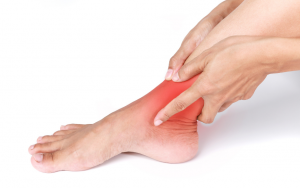
 Tarsal tunnel syndrome is an impingement problem, where one of the key nerves that runs down the inside of your leg and ankle, called the posterior tibial nerve, gets trapped and compressed, resulting in painful symptoms.
Tarsal tunnel syndrome is an impingement problem, where one of the key nerves that runs down the inside of your leg and ankle, called the posterior tibial nerve, gets trapped and compressed, resulting in painful symptoms.
Your tarsal tunnel, named after your tarsal bones that surround your ankle, is a narrow tunnel that is formed between the bones on the inside of your ankle, and the supporting soft tissues that cover it. This tunnel is the home of the posterior tibial nerve, which then splits off into branches that give sensation to areas of your feet. When the space in the tunnel is narrowed, the nerve gets pinched and compressed. This is known as tarsal tunnel syndrome.
Who Is At Risk Of Tarsal Tunnel Syndrome And Why?
This one is a little bit like asking what can cause a sore stomach – there are many different causes for the space in the tunnel to narrow and the nerve to be compressed, and anyone can develop this painful problem.
The cause or contributing factors can range from an ankle injury and the associated swelling that presses on the nerve, to the development of a cyst in the area, to your foot posture. Often, it may be related to sports that place strain and pressure on the structures around the ankle, resulting in damage, swelling or even bone spurs around the ankle. Medical conditions are also a culprit, particularly arthritis that causes inflammation at the ankle joints. Sometimes, no specific cause can be identified.
As the compression is of a nerve, neural symptoms are produced alongside pain, including pins and needles, burning, tingling and numbness at the heel and the bottom of the foot. Your symptoms may worsen or feel better depending on how you’re positioning your foot and ankle, as this may change the space available in the tunnel. If you can reduce any notable swelling, this will likely help reduce the severity of your symptoms.
Treating Tarsal Tunnel Pain
 First steps
First steps
Effectively treating tarsal tunnel pain involves addressing the cause. While ice, compression, elevation and anti-inflammatory medications can help temporarily relieve some of the pain when the cause is related to inflammation, they won’t help if you have a cyst or bone spur in the tunnel. Start by resting your foot and avoiding any activities that trigger the pain.
See your podiatrist
Having proper and effective care for tarsal tunnel pain is very important, as we want to avoid any long-standing nerve damage. Here at My FootDr, we start with a comprehensive biomechanical assessment to understand exactly what’s causing your nerve compression, so we know the best course of treatment for you. This may include custom foot orthotics to help open the tunnel and help with any structural and functional foot problems that may be contributing to the compression and nerve irritation, like with flat feet.
When swelling from another injury around your ankle is causing the pressure, we will effectively manage this injury while helping relieve the nerve compression symptoms. Our goal is always to help you feel better now, as well as reduce the likelihood of the problem returning and continuing to be an ongoing cause of frustration for you in the future.
We’ll make sure your footwear is optimising your recovery and not worsening your symptoms. When you’re ready, we may start you on a stretching, strengthening or gait retraining programme if muscle weakness, tightness or gait abnormalities have contributed to the problem.

